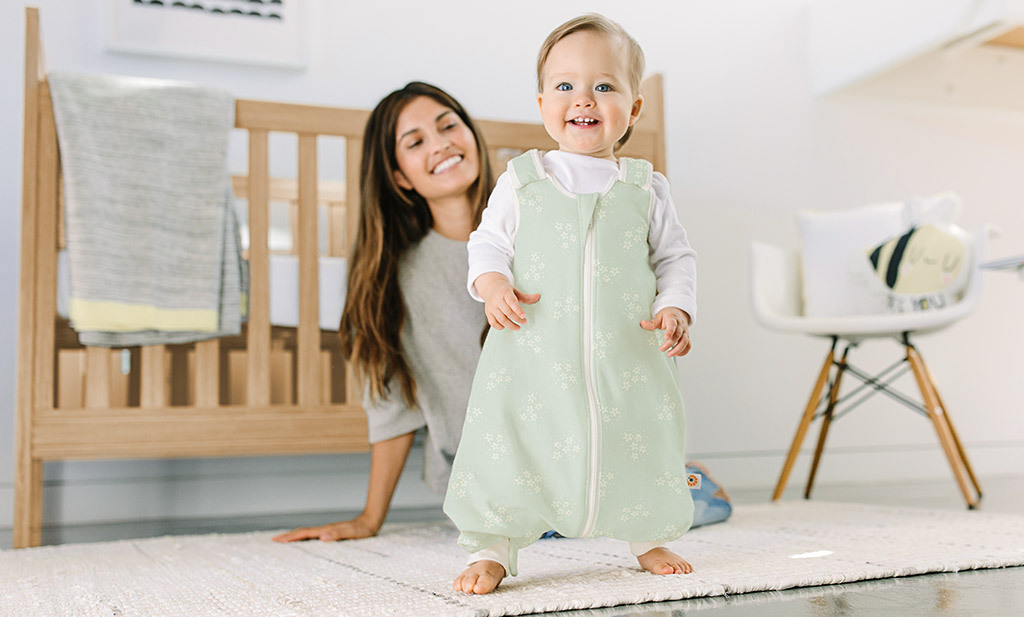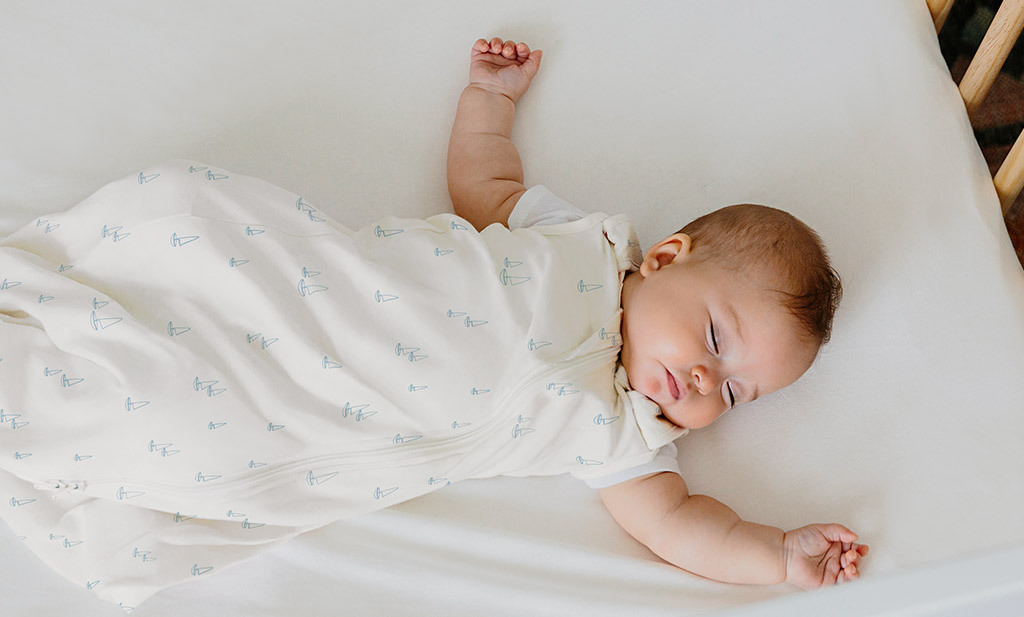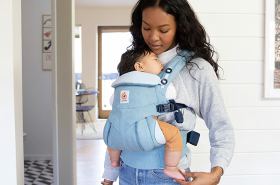
Soon it will be time to get up an hour earlier. The start of daylight saving time beginning on the last Sunday in March makes us all look forward to spring and the start of summer.
The time change also means a change in your sleep rhythm and your baby’s sleep routine which can be a challenge. An hour less sleep is not just a one-off problem. While you may feel sleepy for a few days, the time change can cause your child to have trouble sleeping. That’s why it’s important to consciously adjust your baby’s sleep rhythm to prepare your baby’s sleep routine for the change.
What is circadian rhythm?
The so-called circadian rhythm or sleep-wake rhythm is responsible for this. It promotes regular waking up and that we get tired and go to sleep at a certain time. This is why it is so difficult for your baby’s sleep rhythm if you put baby to sleep an hour earlier when daylight saving time starts. Your sleep routine will tell little one it’s time for a nap, but their body will tell them to stay awake.
This can lead to whining and crying from your child and frustration on your part. Your baby may also wake up at night because of the extra hour. The sleep-wake rhythm is influenced by light and that’s why light is one of the main things that can help you and your children make an easier transition to summertime.
summertime.
The 4 best tips to help your baby adjust to daylight saving time
1. Baby’s evening routine – selectively use brightness and darkness
If you want to maintain your baby’s sleep routine “by the clock”, it is best to start darkening your baby’s room one hour before bedtime four days before the time change. Exposure to light before bedtime makes it more difficult for your baby to get into the evening routine and thus to feel tired and fall asleep earlier. By providing a dark environment, you are helping your baby to adjust early and start the evening routine, and therefore the sleep routine, earlier.
If you put your child to bed at 8 pm, close the curtains at 7 pm, use only dimmed lights, small table lamps or night lights. This way, your baby’s body will know that the evening routine is about to begin.

2. Help baby fall asleep – only quiet games before bedtime
Activities before bedtime determine the evening routine and the possibility of slowly getting tired. With the lights dimmed, you can cuddle with your child or read books. Quiet games or a baby massage are also suitable as a sleep aid for your baby. This helps your baby to slowly settle down. Avoid screens and toys with lights. These tend to have an activating effect.
3. Adjusting bedtime – small adjustments can make the transition easier?
Scheduled or routine bedtimes are important for your baby. That’s why you should move the bedtime and each nap up a quarter of an hour on each of the four days before the time change. On the first day by 15 minutes, on the second by 30 minutes, on the third by 45 minutes and on the fourth by 60 minutes. Then you will have balanced out the hour over the four days and the sleep rhythm will not change drastically from one day to the next. With babies aged three to six months, you can also start adjusting the sleep rhythm earlier.
For example, start a week in advance and then approach the time change in 10-minute increments. If your baby is under three months old, you probably won’t need to adjust much, as the circadian rhythm is probably not yet tied to a specific sleep/wake time. You can wake your baby at the appropriate time, but don’t try to keep him awake longer – otherwise he’ll get overtired, cranky and have trouble falling asleep afterwards. If your baby is younger than six months, make sure that there is at least 90 minutes to two hours between the last nap and bedtime. This will ensure that the evening routine runs smoothly and your baby will have no problems getting to sleep despite the change in sleep rhythm.

4. Baby’s sleep rhythm in the morning – bright lights help
Gradually adjust your baby’s wake-up time according to the shifted sleep rhythm. You can adjust the wake-up time in 10-15 minute increments, similar to the sleep routine, and wake your baby a little earlier each day. Also, make sure that your baby is exposed to bright light shortly after waking up. This will ensure that your baby is awake at the right time and that his sleep rhythm ends on time, so that he will be tired earlier in the evening.
Does your baby generally have problems falling asleep? You can find more on the topic of “baby’s sleep rhythm” and suitable sleep aids in this blog here.



